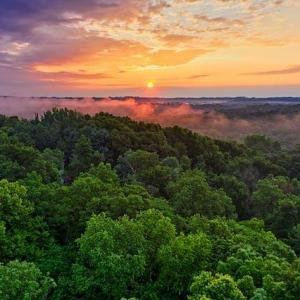
The Archipelago's Unique Creation
Born from the fiery depths of underwater volcanoes, the Galápagos Islands emerged as a series of enigmatic landforms in the Pacific Ocean. Located nearly 600 miles off the coast of Ecuador, this archipelago consists of 13 main islands, each boasting its unique landscape, from barren volcanic rocks to lush highlands. The formation of these islands, through millennia of volcanic activity, set the stage for an ecological wonderland, a place where life would evolve in isolation and create a tapestry of biodiversity unlike anywhere else on Earth.Flora and Fauna: Nature's Grand Display
The Galápagos Islands are a showcase for evolution in action. The isolation, combined with the varied ecosystems—ranging from arid deserts to humid cloud forests—has led to the rise of incredible endemic species. Giant tortoises, which the islands are named after, roam the highlands. Blue-footed boobies dance along the shores, and marine iguanas, the only seagoing lizards in the world, bask on the lava rocks. The Galápagos penguin, defying the tropical location, swims in the cold currents that bathe the islands. Each island offers a unique set of inhabitants, a testament to nature's ability to adapt and thrive.Darwin and the Theory of Evolution
While the Galápagos Islands were known to Spanish mariners in the 16th century, their claim to scientific fame was solidified in the 19th century by none other than Charles Darwin. His visit aboard the HMS Beagle in 1835 became a pivotal moment in scientific history. Intrigued by the variations among species from island to island, Darwin's observations here formed the basis for his groundbreaking theory of natural selection. The finches, in particular, with their varied beak shapes adapted to different food sources, became iconic examples of evolutionary adaptation.Conservation: Protecting the Islands' Legacy
The unique biodiversity of the Galápagos has also made them vulnerable. From the 17th to the 19th century, the islands faced threats from pirates, whalers, and invasive species. Recognizing their global significance, efforts in the 20th and 21st centuries have focused on conservation. The establishment of the Galápagos National Park in 1959 and the subsequent designation as a UNESCO World Heritage site in 1978 marked significant strides in preserving this ecological gem. Today, rigorous measures ensure that tourism, a vital source of revenue, remains sustainable and minimally invasive.Conclusion: A Living Testament to Nature's Wonders
The Galápagos Islands stand as a profound testament to the wonders of the natural world and the intricate dance of evolution. Each visit offers a journey through time, witnessing the raw power of nature and the delicate balance of life. It's a place where the boundaries between the past and present blur, urging us to understand our deep connection to the environment and the importance of preserving the planet's invaluable treasures.
Article
Be the first comment














